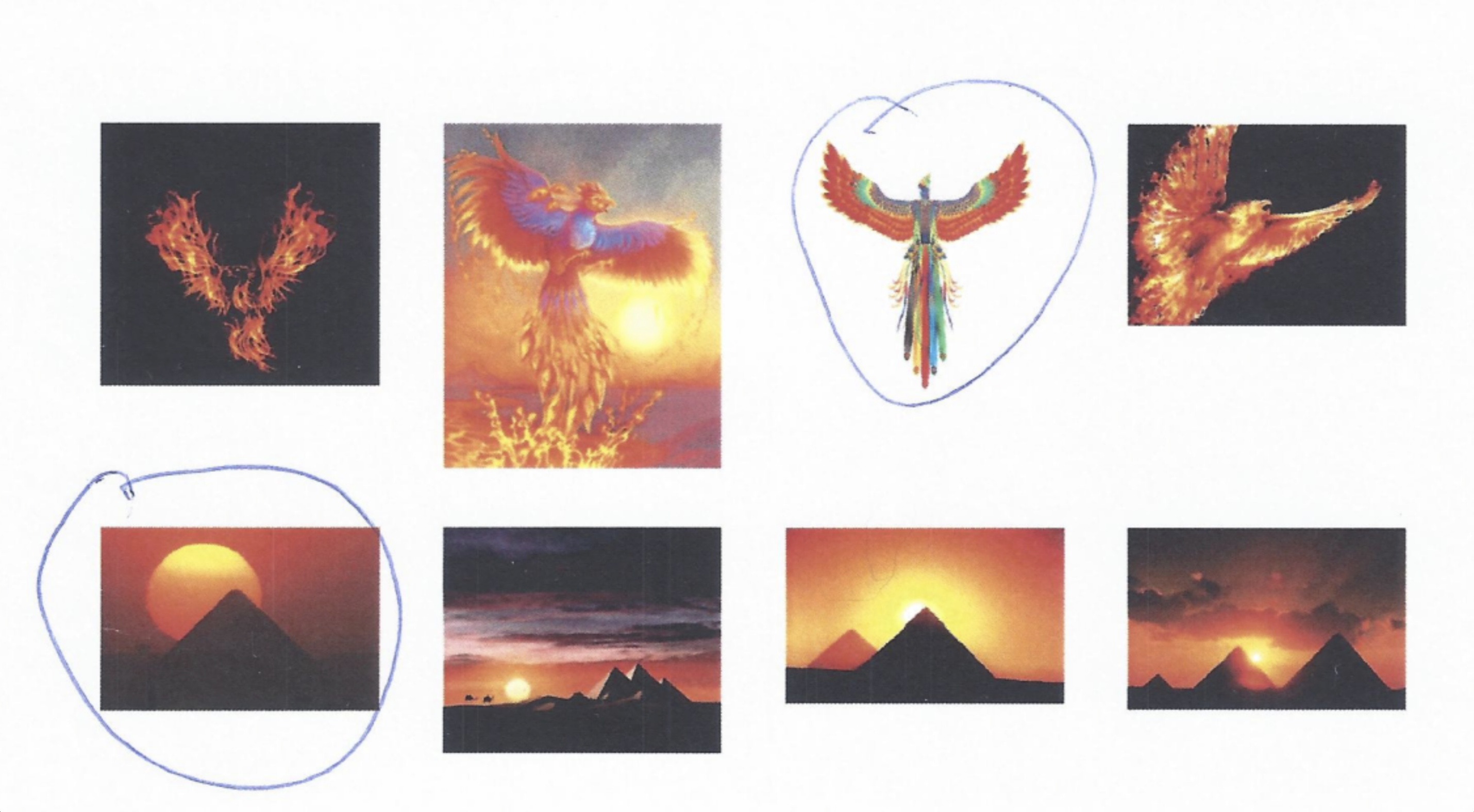Photo Collaboration University Without Walls Students x Olivia Mikolai Ridge
Reginald BoClair x Olivia Ridge
Correspondence
Reginald BoClair x Olivia Ridge
Correspondence
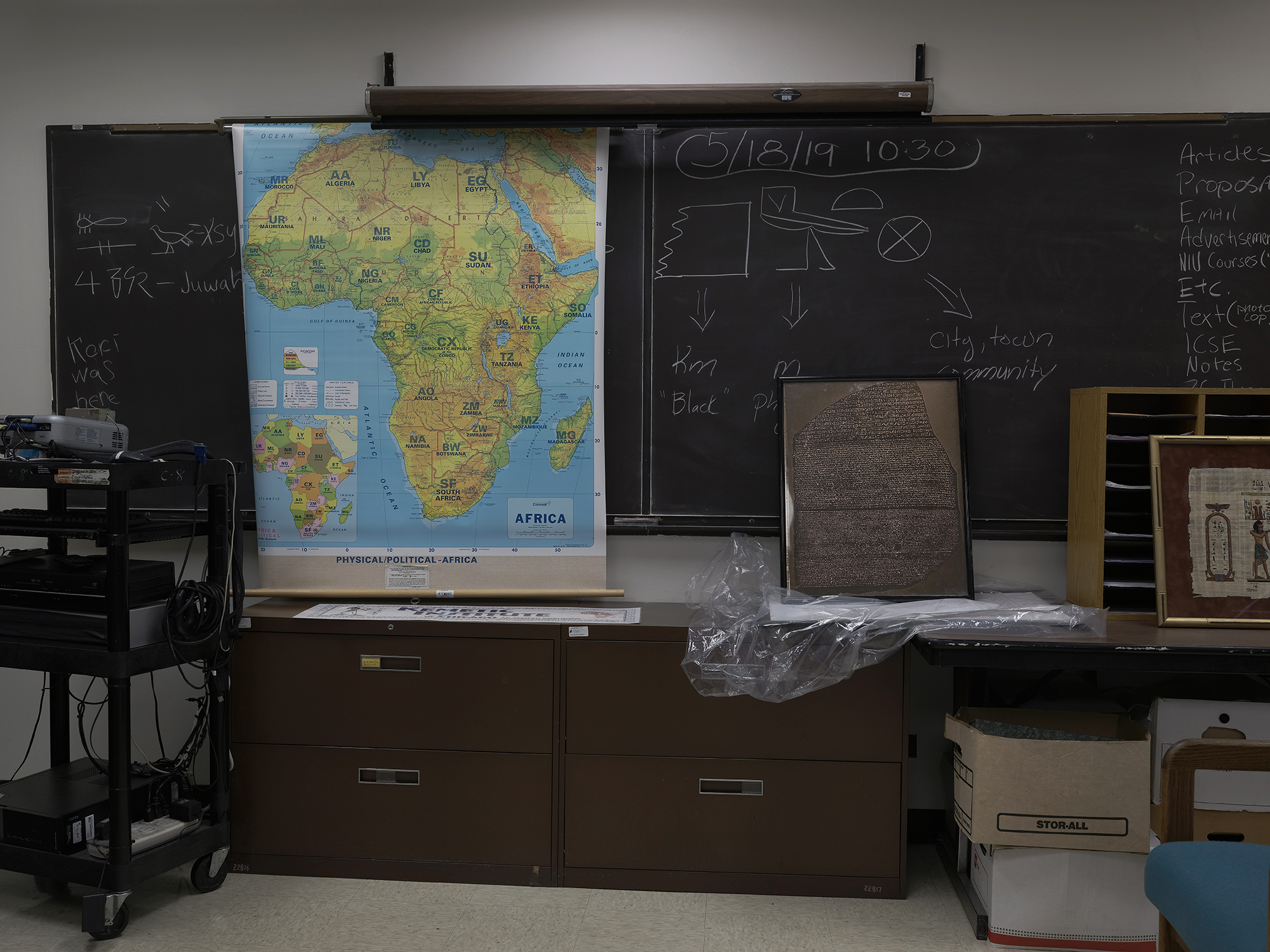
Sun Rising Behind the Pyramids of Kemet, 2022, Reginald BoClair and Olivia Ridge
First Correspondence Q & A
02/02/22 & 02/24/22
OR: How do you want to be seen? This is intentionally a broad question for you to answer literally or abstractly. Photographs reflect parts of ourselves. What would you like people to know about you from your image?
RB: That, as I currently exist, I’m like a caged bird, but human.
OR: Describe the best photograph of yourself. This photograph can be imagined or real.
RB: Anything that depicts me as not incarcerated.
OR: Is there a real or historical place you would like to be photographed? Imagine you can be photographed in any place or setting that holds meaning for you.
RB: The picture should depict me as a caged bird with a background depicting my family (mother, two sisters) about to eat a family meal together with my place at the table empty. The images merge into a sun setting behind the pyramids of Egypt.
OR: What is your relationship to your State ID photo (like it, hate it)? Would you change or edit your State ID photo if you could? If so, what would you do?
RB:
Of course I hate it! If I could change it, I would have it be one the State of Illinois issues instead of the one Illinois Department of Corrections issues.
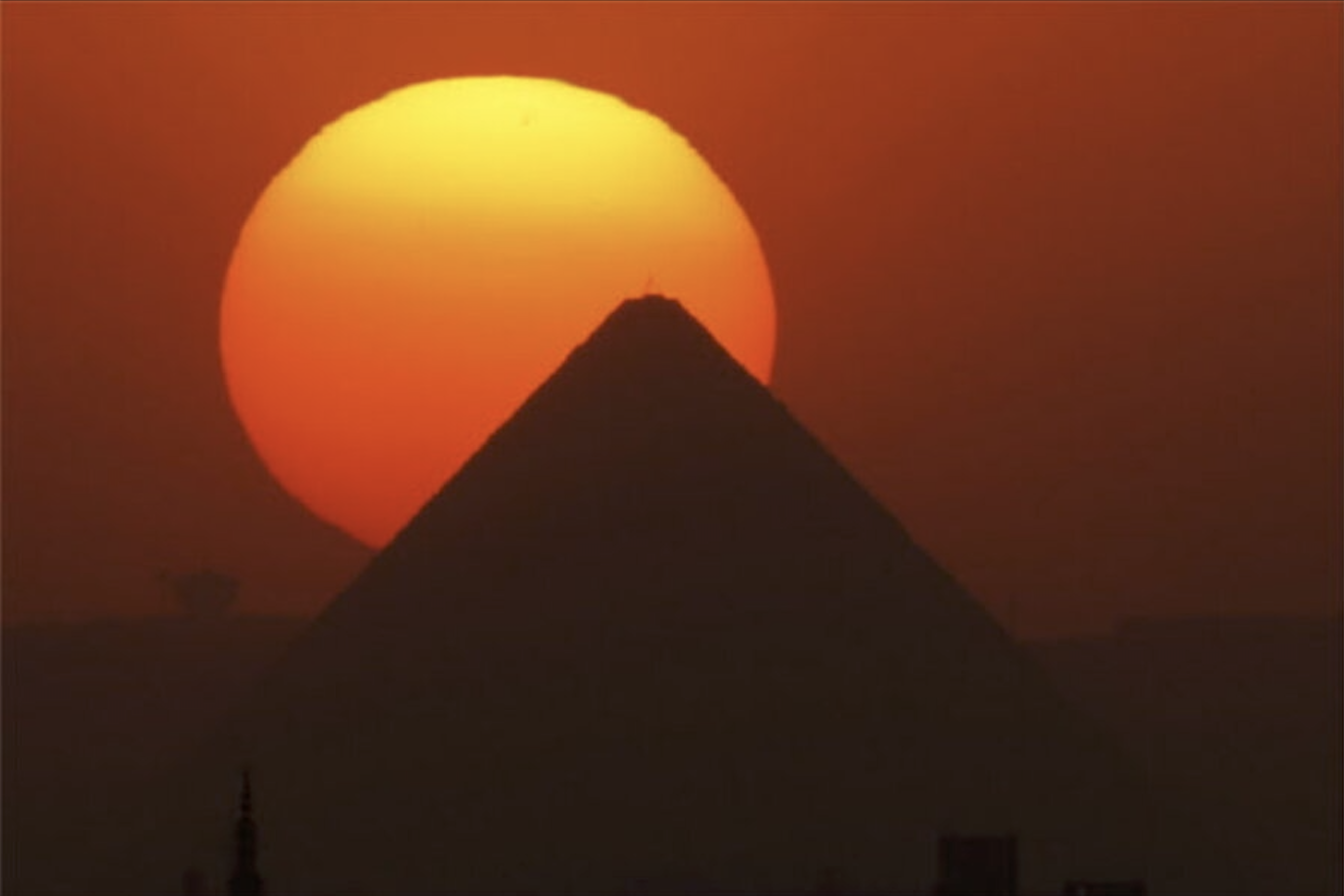
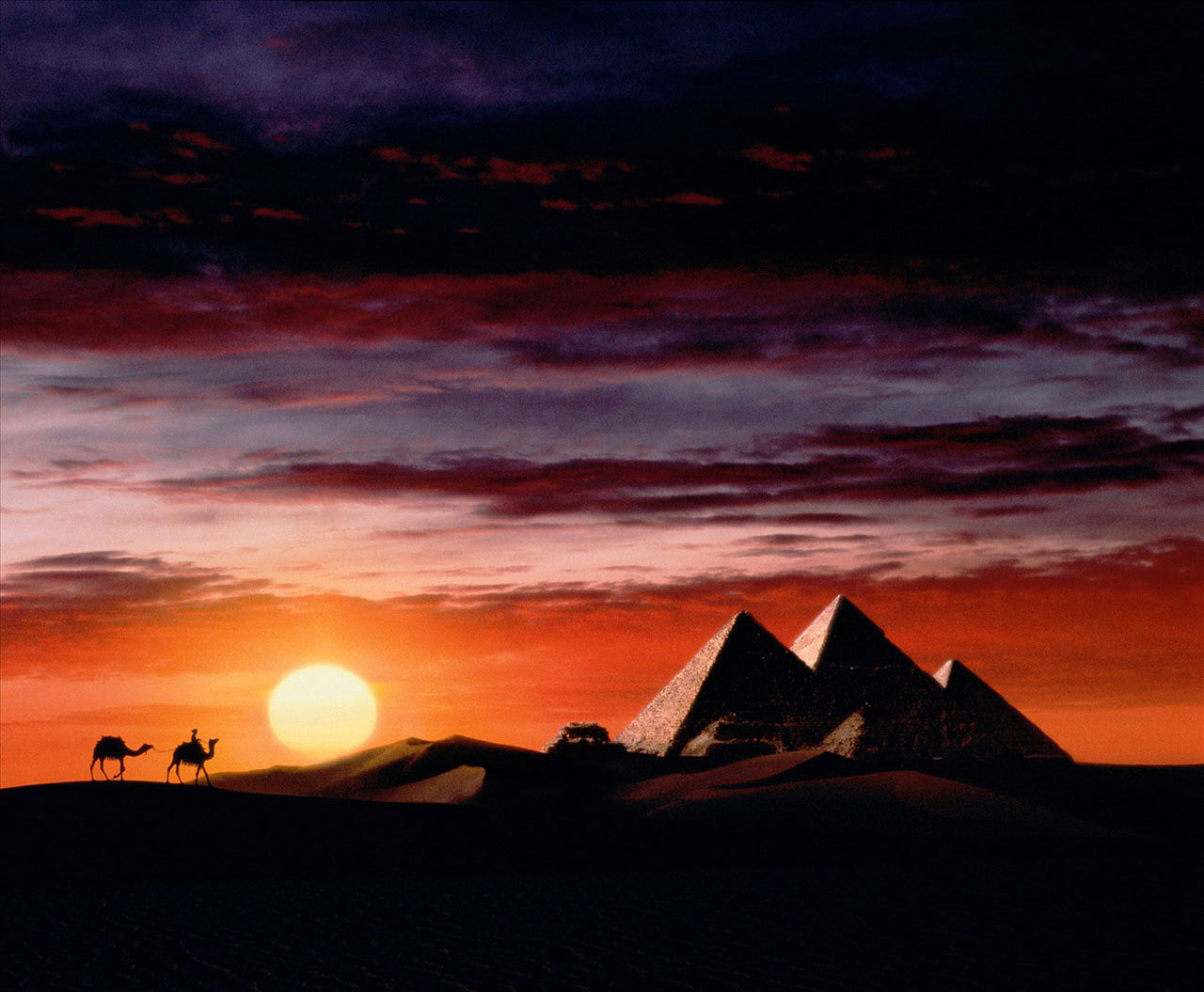


02/21/22
Hi Reginald,
Thanks for your response. I am very compelled by the picture you describe containing layered images of a caged bird, your empty seat as your family gathers around the dining table, and the sun setting behind the pyramids of Egypt. To be sure I get each element right, I’d like to ask you more about each layer.
First, I believe we share a love of history; I studied Classical and Near Eastern Archaeology for two years before I started on my path as an artist. Your bio on the PNAP website describing your studies in Contemporary Antiquitous African Cultures gives me more context for your interest in the image of the Egyptian pyramids. To incorporate the pyramids as you envision, I’d like to know more about your passion for ancient studies. What do these monuments represent / symbolize in your life? I’ve attached several photos of the pyramids as visual references to help guide your descriptions. I will be able to add colors, a setting sun, or even move the pyramids into any formation. Feel free to mark these up to share as much as you can about your ideal image of the pyramids.
You also mention that the photograph should depict a scene of your mother and two sisters seated around a table for a meal. What dishes are on the table for the family meal? What kind of table are you seated around? I would happily include photographs of your family if they were available. Please describe your mother and your two sisters as best as you can (especially hairstyles). Then we can decide on a path forward that best fits your vision.
Finally, what type of caged bird are you? Having seen your painted portrait, I am picturing a colorful parrot or macaw.
Looking forward to diving into this image with you,
Olivia
03/09/22
Hello Olivia,
I appreciate you taking the time to respond to my vision. Each aspect conveyed holds meaning, as life is symbolic to me. I’m especially pleased to know we both are interested in history. I would like to learn more about the depth of your studies. History for me was/is about identification. “Who are you? Where do you come from, through what lineage?” My initial interest was in learning about mankind who came before me. As I grew, matured, and life as an adult started to happen, the importance of identity was not lost on me. Especially when I found myself here, and never having known my father, nor having a male role model to nurture and guide me into the bounds of maleness.
Everything I’ve learned as it relates to being a man I had to teach myself through trial and error. The history of the forefathers and foremothers is what buoyed me in the early years, as through their pedagogy I fought to understand what had befallen me. It’s as if when reading about how Africa was both the origin of mankind and civilization, the ancestors were beckoning me to come eat and drink from their well of sustenance as they had over 250,000 years of uninterrupted documented life science to share. The culmination of this life science found its greatest expression first in Sennear (Ta-Nehasi, Nubia, or Ethiopia), and then in its daughter Kemet (Egypt, Ta-Meri, Sais). So the pyramids represent to me the greatest expression of being divine the history of man has ever recorded, and they are still enigmatic today. The setting sun, or going into Amen, is the picture I like and want. Excuse me for my verbosity. But there is so much divinity, math, and science in them. Wow!
In terms of food, maybe greens, smoked turkey legs or wings, hot water cornbread, and banana pudding pie :)
Last but not least, the type of caged bird I envision is either a caged fiery phoenix or a Neberdjer or Nebertjer.
Sincerely,
Reginald BoClair
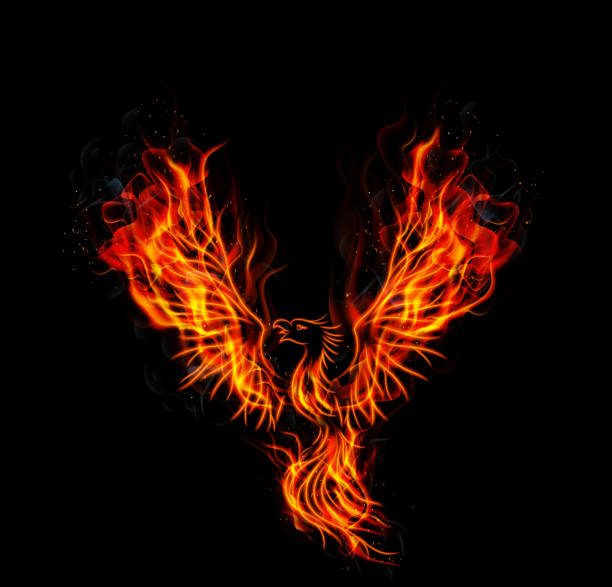



03/29/22
Hi Reginald,
Thanks for your response – really thought-provoking letter. I look forward to responding more in-depth soon regarding our shared interests in history. In this letter, I have a few images to share with you and a few ideas to run by you.
Based on correspondence with the other students, my plan is to photograph one physical location for you as the uniting aspect of the larger project. This will serve as the background or other major aspect of the full collage.
As another option, I have found a few places in Chicago connected to your interests in Egyptology. I am curious about what it means to connect you to African studies happening closer to home. I’ve attached some photographs of three places in Illinois. The first is Gold Pyramid House. I think I could photograph this at sunset to have a similar affect as the earlier Google photos I sent you. The second is the Kemetic Institute in Chicago, the Temple of the African Community of Chicago, founded by Jacob Carruthers. I have not found images of the interior online, but I can visit this place for you and share what I find. The final one is bizarre – the neo-Egyptian façade of a storage warehouse on the North Side of Chicago. Let me know if any of these images or places are of interest to you. I am happy to share more information about any of them or visit all of them with reports and photographs. I envision that one of these places could be added to your collage to situate you in this time and place, but the option is entirely yours.
Finally, I couldn’t find an image of a Neberdjer bird online yet, but I have found a reference to this name in a source on Ancient Egypt. If you describe the characteristics of the bird and its origins that would help me find it.
Looking forward to sending you more soon,
Olivia
Hi Reginald,
Thanks for your response – really thought-provoking letter. I look forward to responding more in-depth soon regarding our shared interests in history. In this letter, I have a few images to share with you and a few ideas to run by you.
Based on correspondence with the other students, my plan is to photograph one physical location for you as the uniting aspect of the larger project. This will serve as the background or other major aspect of the full collage.
As another option, I have found a few places in Chicago connected to your interests in Egyptology. I am curious about what it means to connect you to African studies happening closer to home. I’ve attached some photographs of three places in Illinois. The first is Gold Pyramid House. I think I could photograph this at sunset to have a similar affect as the earlier Google photos I sent you. The second is the Kemetic Institute in Chicago, the Temple of the African Community of Chicago, founded by Jacob Carruthers. I have not found images of the interior online, but I can visit this place for you and share what I find. The final one is bizarre – the neo-Egyptian façade of a storage warehouse on the North Side of Chicago. Let me know if any of these images or places are of interest to you. I am happy to share more information about any of them or visit all of them with reports and photographs. I envision that one of these places could be added to your collage to situate you in this time and place, but the option is entirely yours.
Finally, I couldn’t find an image of a Neberdjer bird online yet, but I have found a reference to this name in a source on Ancient Egypt. If you describe the characteristics of the bird and its origins that would help me find it.
Looking forward to sending you more soon,
Olivia

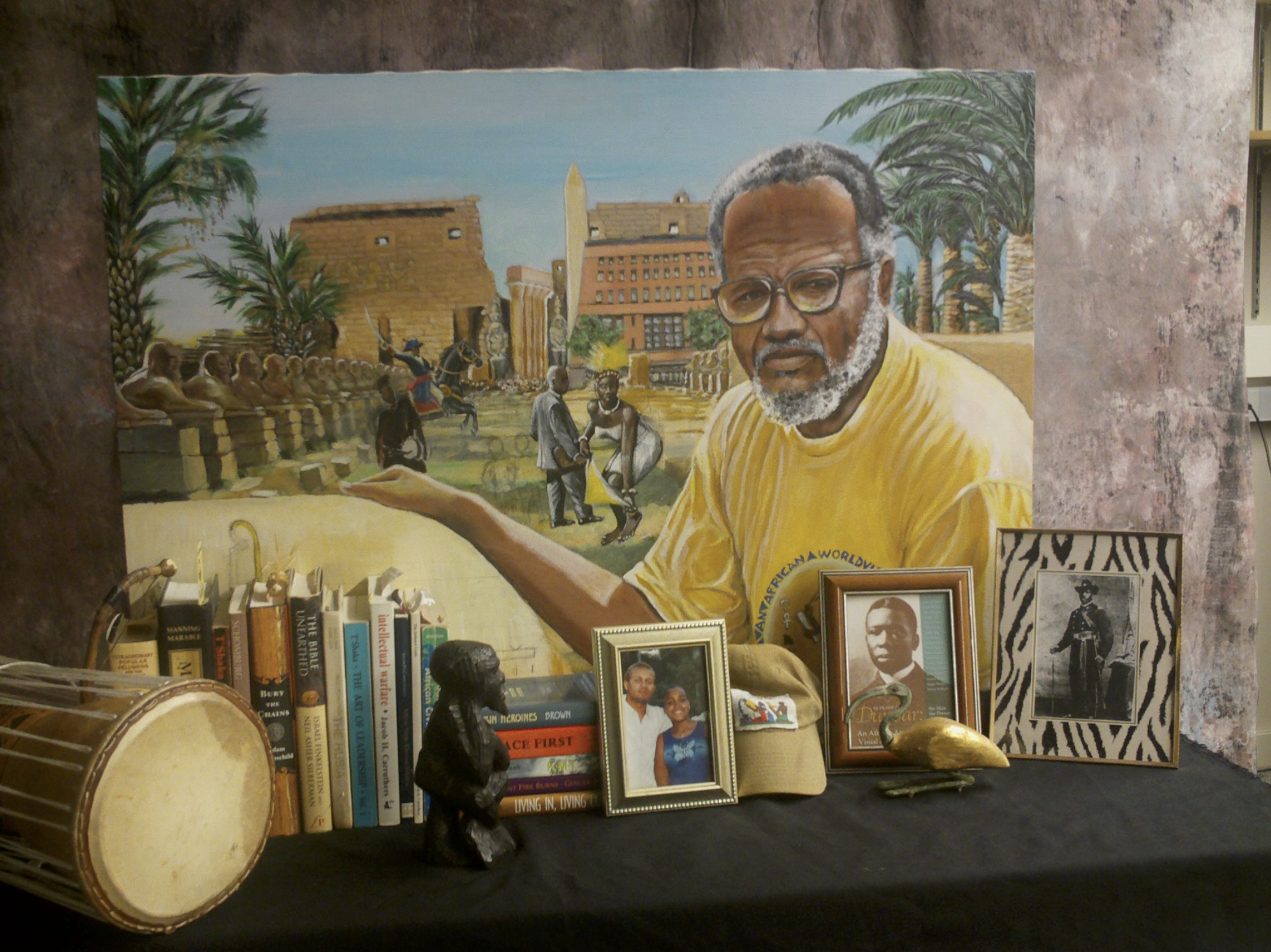
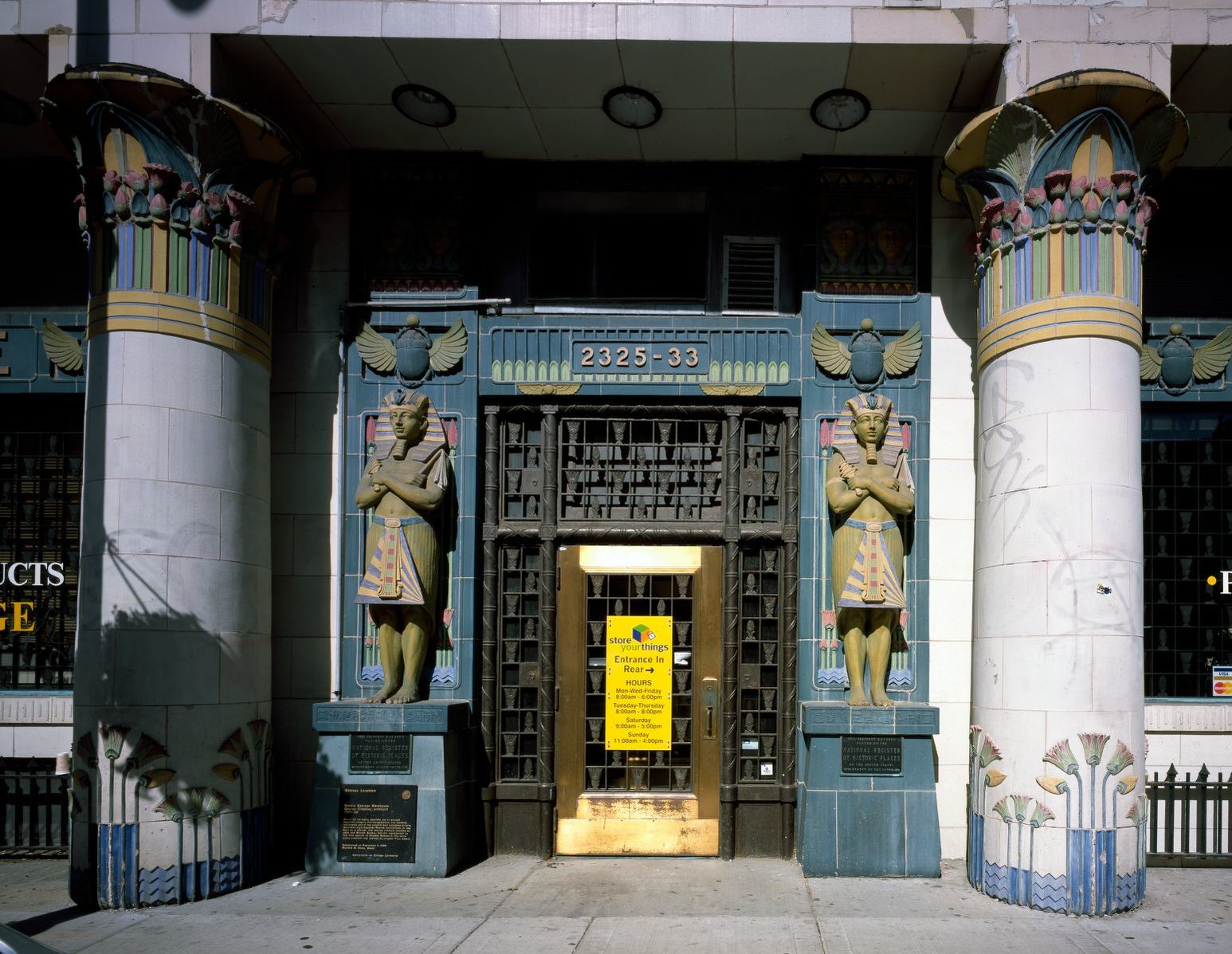
Left: Rocko Onan, Gold Pyramid, http://goldpyramid.com/
Middle: Photograph of Jacob Carruthers, Kemetic Institute, https://www.facebook.com/KIChicag
Right: Carol Highsmith, The 1921 Reebie Storage Warehouse, https://fineartamerica.com/featured/ramses-too-carol-highsmith
03/30/22
Hello Ms. Olivia,
I want you to use whatever you decide, so that the collaboration is a byproduct of both our minds. I’ve given you the framework of my vision, now I want you to add to it and use your imagination to do so. Lastly, the Neberdjer, or Nebertcher, represents the all-encompassing. You can inquire at the Kemetic Institute as to what it looks like. It represents an ideal in Mettu Neter or hieroglyphics, and does have a pictorial representation. I look forward to future correspondences on this topic. Take care and stay safe.
Sincerely, Reginald Boclair

07/27/22
Hi Reginald,
I went to the Kemetic Institute and Carruthers Center for Urban Studies in Bronzeville this week. Yvonne Jones gave me an amazing tour and background on the Institute. I thought I’d start by sharing some of that information in this letter to you. I ended up photographing the displays and artwork presented in the Kemetic Institute, as well as some of their teaching materials, archives, and history.
Here is a bit about the center, written by Jacob Carruthers’s wife, Ifé:
‘The Kemetic Institute, presently based in Chicago, Illinois, is a research organization concerned with the restoration and reconstruction of African civilization through scholarly research, African-centered education, artistic creativity, and spiritual development. The organization takes its name from ancient Egypt. The people who lived along the Nile River in Egypt over five thousand years ago called their country “Kemet,” which means “the black city” or “the black community.” These people who called themselves “Kemites,” which means “the black people,” developed the world’s first civilization.
‘Dr. Carruthers, a political scientist, historian, and Egyptologist, became the founding director in 1978. He had long been concerned with the need for a scholarly research organization which would not only revitalize and reconstruct African history and culture but would serve as a reservoir for preserving and continuing the work begun by great black scholars during the 18th and 19th centuries.’
The Institute serves as a monthly gathering space for members, as well as a resource for study. Since the pandemic began in 2020, they have conducted all their meetings online, but are planning to meet again in person soon. As you can see from some of the photos, members have travelled to Egypt together many times for study trips. Since I cannot go to Egypt to photograph the pyramids for you, this feels like a step closer to the kind of journey that you would like to make, made by people that have visited for similar spiritual, academic, and personal reasons. Yvonne told me that the goal of the Kemetic Institute and the members is to serve as a transformative space for working professionals, teachers, and academics to recognize and learn about the important role of African peoples in contemporary society.
I recognize that this process has in some ways veered away from what you originally said. I hope there is something meaningful here connected to what you have written to me in the past and how we can represent who you are in a photograph.
Looking forward to your thoughts, questions, and responses,
Olivia
![]()
![]()
![]()
![]()
Hi Reginald,
I went to the Kemetic Institute and Carruthers Center for Urban Studies in Bronzeville this week. Yvonne Jones gave me an amazing tour and background on the Institute. I thought I’d start by sharing some of that information in this letter to you. I ended up photographing the displays and artwork presented in the Kemetic Institute, as well as some of their teaching materials, archives, and history.
Here is a bit about the center, written by Jacob Carruthers’s wife, Ifé:
‘The Kemetic Institute, presently based in Chicago, Illinois, is a research organization concerned with the restoration and reconstruction of African civilization through scholarly research, African-centered education, artistic creativity, and spiritual development. The organization takes its name from ancient Egypt. The people who lived along the Nile River in Egypt over five thousand years ago called their country “Kemet,” which means “the black city” or “the black community.” These people who called themselves “Kemites,” which means “the black people,” developed the world’s first civilization.
‘Dr. Carruthers, a political scientist, historian, and Egyptologist, became the founding director in 1978. He had long been concerned with the need for a scholarly research organization which would not only revitalize and reconstruct African history and culture but would serve as a reservoir for preserving and continuing the work begun by great black scholars during the 18th and 19th centuries.’
The Institute serves as a monthly gathering space for members, as well as a resource for study. Since the pandemic began in 2020, they have conducted all their meetings online, but are planning to meet again in person soon. As you can see from some of the photos, members have travelled to Egypt together many times for study trips. Since I cannot go to Egypt to photograph the pyramids for you, this feels like a step closer to the kind of journey that you would like to make, made by people that have visited for similar spiritual, academic, and personal reasons. Yvonne told me that the goal of the Kemetic Institute and the members is to serve as a transformative space for working professionals, teachers, and academics to recognize and learn about the important role of African peoples in contemporary society.
I recognize that this process has in some ways veered away from what you originally said. I hope there is something meaningful here connected to what you have written to me in the past and how we can represent who you are in a photograph.
Looking forward to your thoughts, questions, and responses,
Olivia
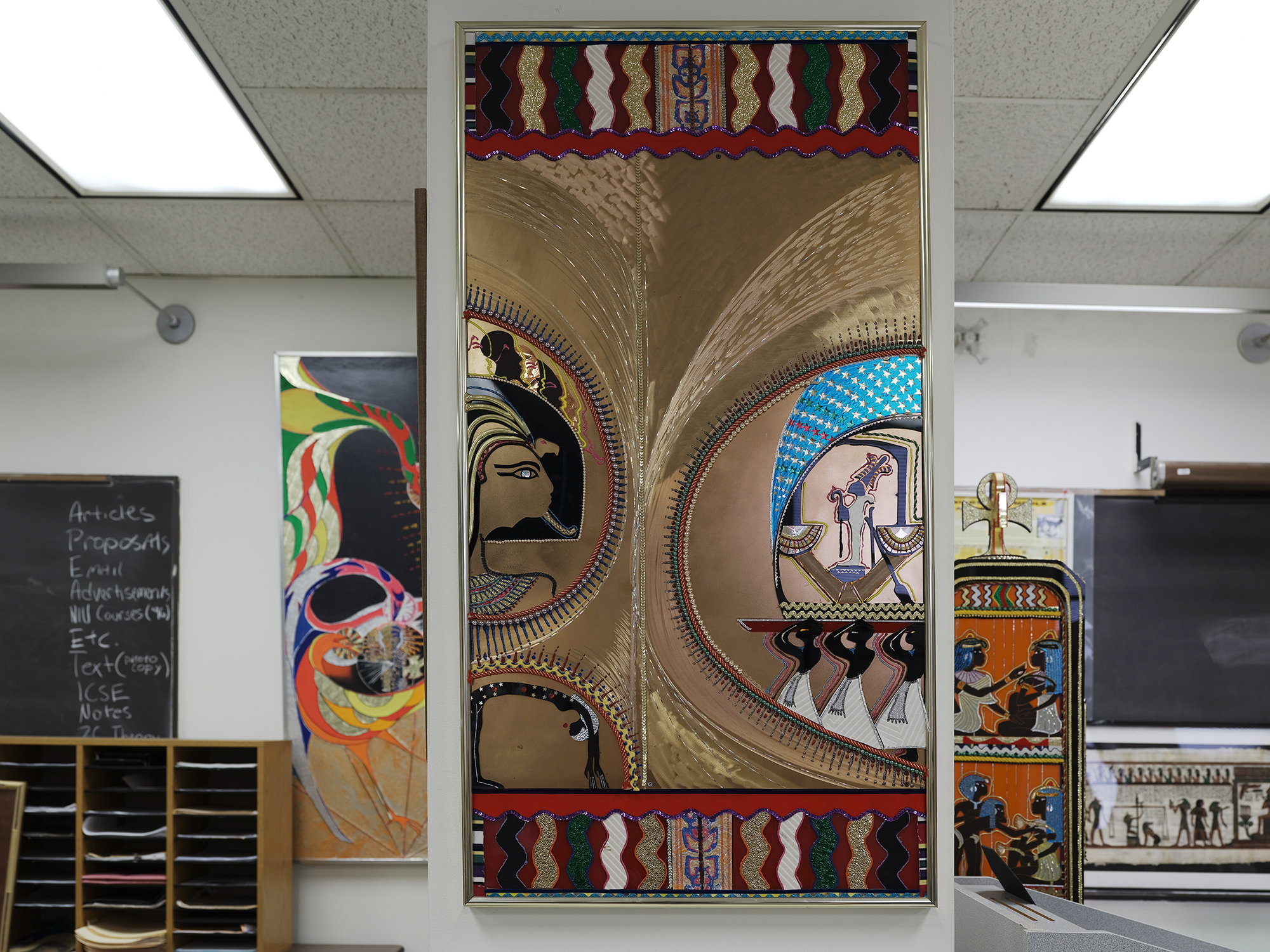
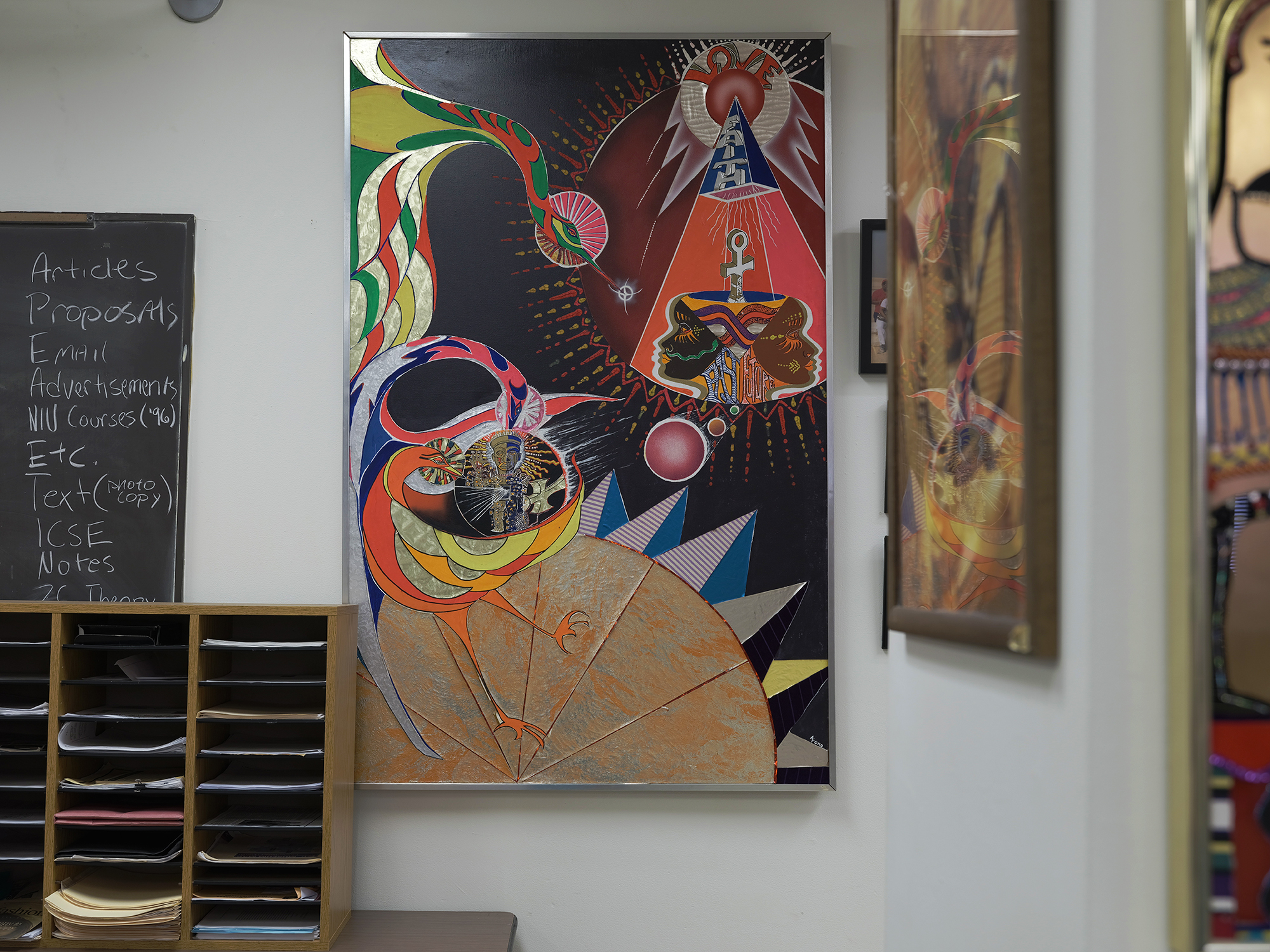
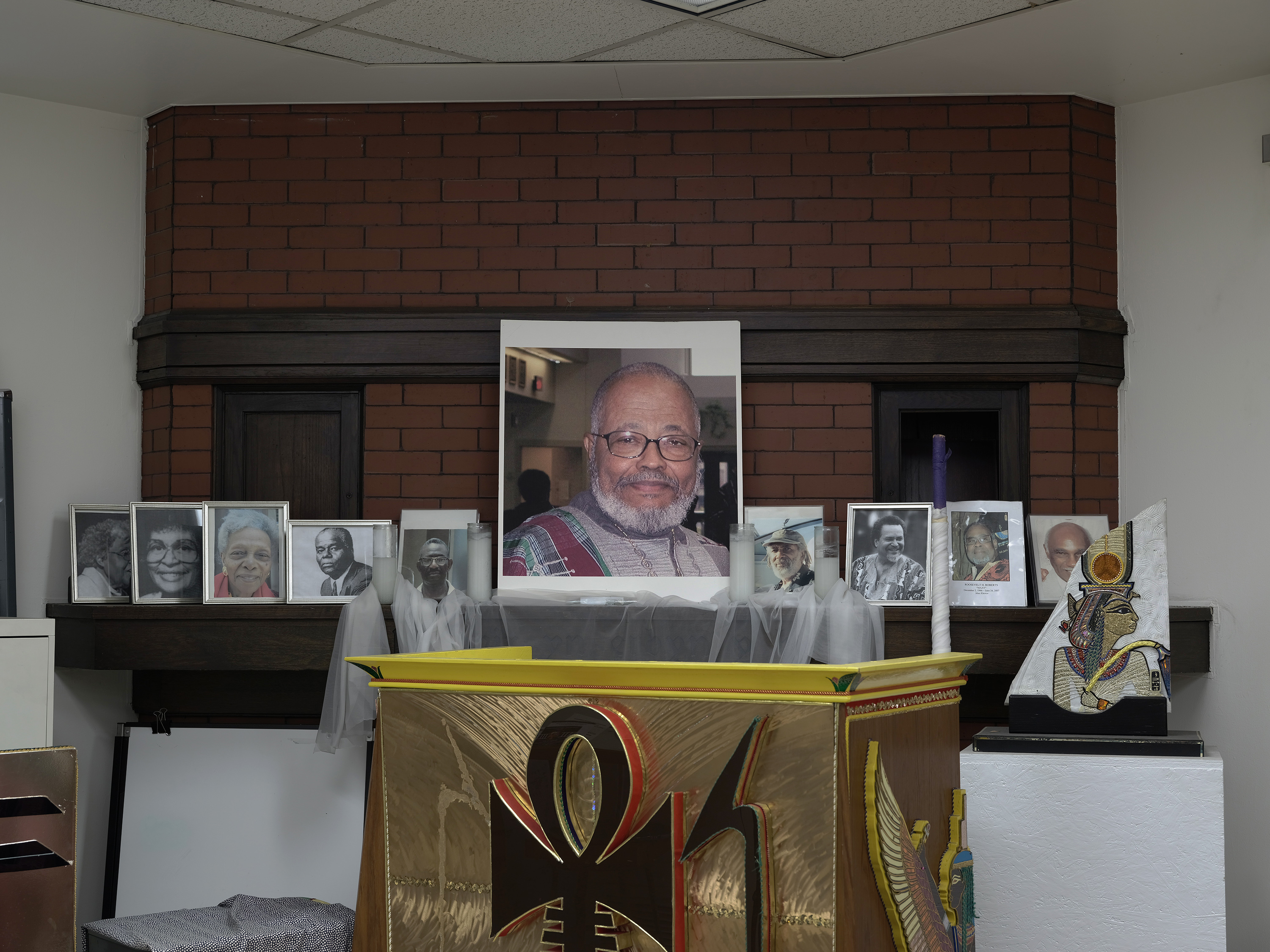



These images contain paintings and sculptures by Chicago State University professor Ausbra Ford.
Hi Olivia,
I received your latest correspondence, and I appreciate your effort to personalize the collaboration. However, only through your interpretation of the vision I gave can you best capture the essence of me. You are the artist, and I trust the authenticity of your creative process. For me, as long as the aesthetic is “Ta-Meri,” it captures the vision.
Reginald BoClair
